The more than a century old Historical Carnival of Civita Castellana, one of the four most renowned and awaited events of the kind in Lazio, is a true hymn to joy and freedom, originated from the salacious Fescennine chants. The oldest document attesting to the existence of the Carnival is a municipal statute from 1566.
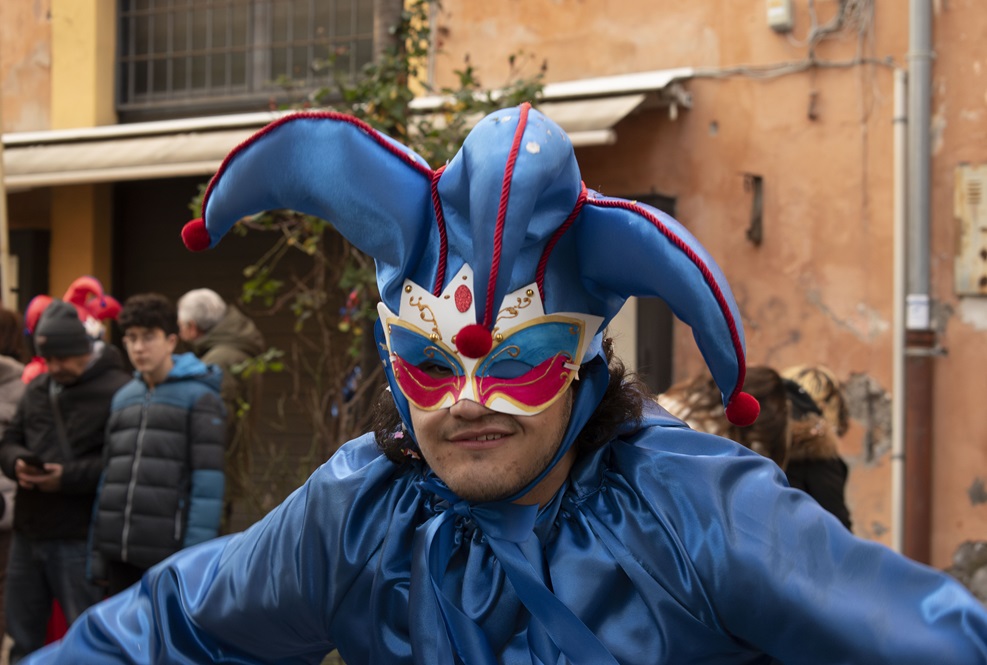
A mask from the Historical Carnival of Civita Castellana
Although no document exactly certifies the first forms of celebration, jesters and clowns already animated the event during the Middle Ages, drawing all participants into a collective euphoria.
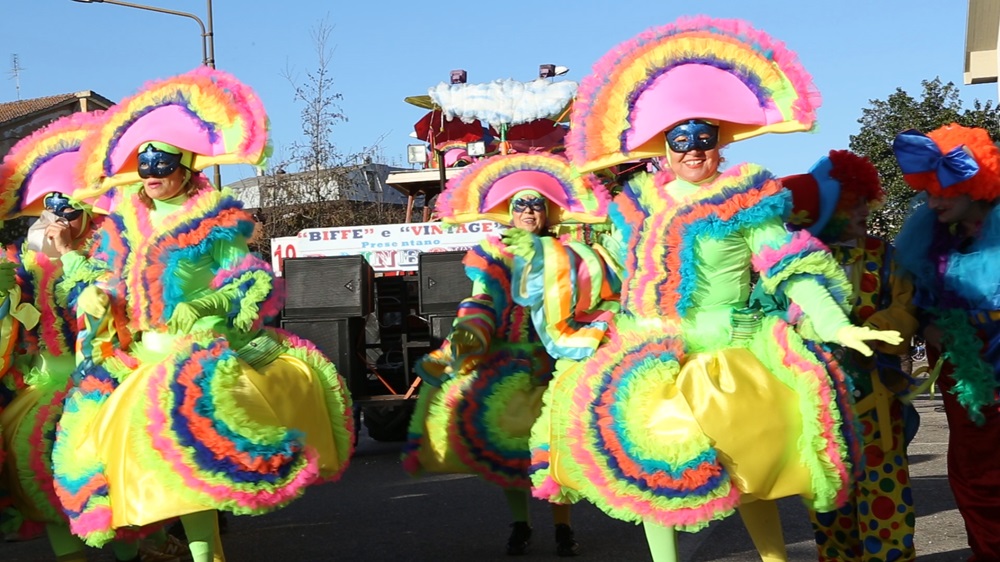
A mask from the Historical Carnival of Civita Castellana
Today, young and old spectators still parade dancing through the streets of the village “La città che balla”, following the allegorical floats.
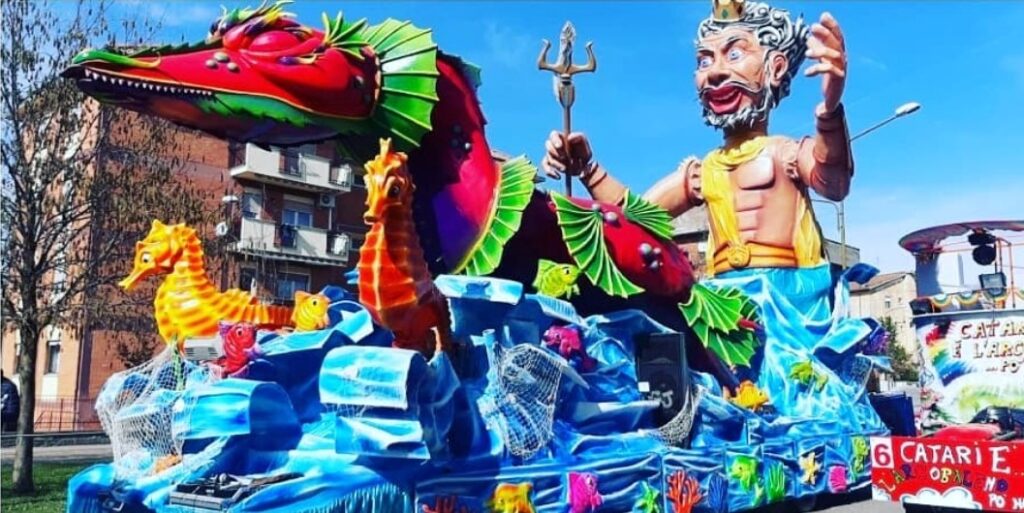
The parade of the allegorical floats
The papier-mâché allegorical floats, true works of art created by passionate local craftsmen, have become bigger and more sophisticated over the years.

O’ Puccio in piazza Matteotti
The celebrations start on January 17 with the arrival of O’Puccio in Piazza Matteotti, accompanied by the unusual folk band “La Rustica” in red and blue uniform.
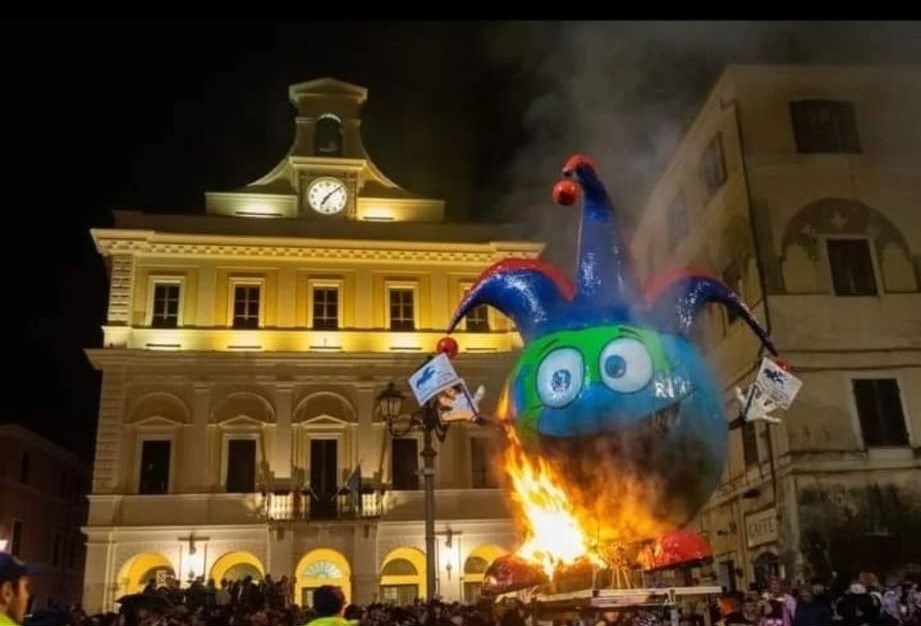
Il rogo in piazza che sancisce la fine dei festeggiamenti
O’Puccio, the protagonist of the Carnival, is a papier-mâché giant publicly burned on Shrove Tuesday night, the last ceremony of the festival.
But the highlight of the event is the allegorical float parade through the streets of the historical centre, a long snake animated by a multitude of playful participants, dancing in colourful dresses.
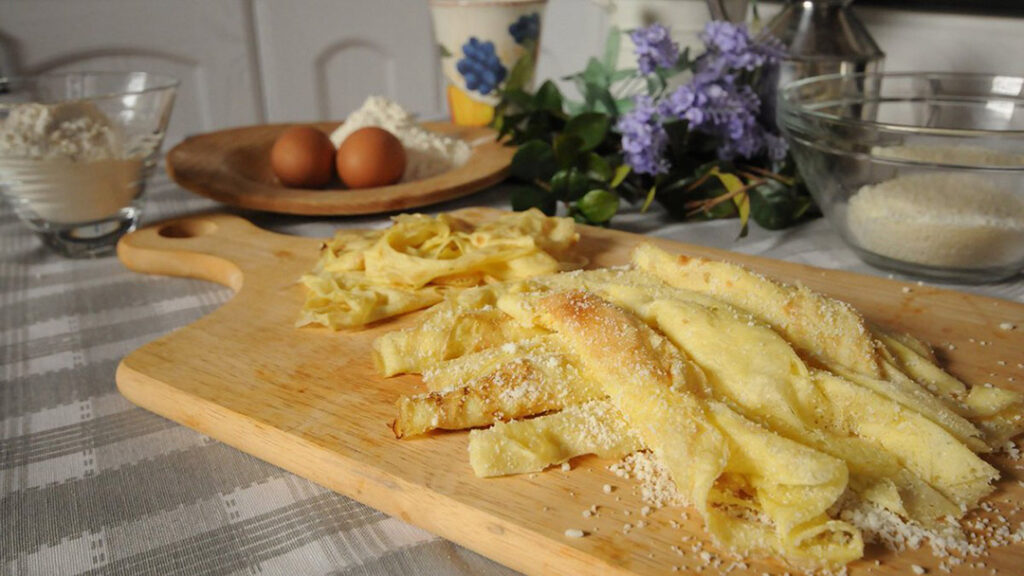
The Frittelloni of Civita Castellana
The Carnival of Civita Castellana is also celebrated with traditional recipes, such as the Frittelloni, thin fritters sprinkled with pepper and Pecorino cheese. Typical of the Agro Falisco area and the province of Viterbo, they are called with different names according to the villages and may be served hot or cold.
